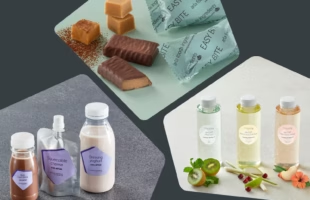
Courtesy of Anna Tarazevich/Pexels
In the past, trying to find sugar-free products in the candy aisle was an exception rather than the norm. Fast forward to today, the shelves are lined with a dizzying selection of sugar-free or sugar-reduced options, making consumers spoiled for choice.
This trend can be largely attributed to consumers becoming more health-conscious and aware of nutritional labels due to increased health problems, with high obesity and diabetes causing many consumers to seek more sugar-free products. In fact, six out of ten consumers globally say health is their priority when selecting indulgent products.
Meeting Consumer Expectations with Healthy Confectionery
With so many consumers looking to improve their blood sugar levels, the challenge for many confectionery manufacturers is creating sugar-free products with the same taste and texture as regular ones. As sugar is crucial for flavour and texture, a range of technical and sensory obstacles must be overcome to reduce sugar and meet high consumer expectations effectively.
In any product reformulation involving cutting out sugar or fat, the difficulty is to maintain the same sweetness and mouthfeel the original ingredients give. Consumers want a better nutritional profile but don’t want to make sacrifices when it comes to the overall indulgent experience. Thanks to the introduction of functional ingredients, the quality of sugar-reduced; no added sugar; and sugar-free products have vastly improved, thus making their presence more well-known in the global confectionery market.
In particular, the sugar-free chocolate market has witnessed significant growth, with the Asia Pacific region found to be the fastest-growing market. The area is anticipated to produce the highest growth rate compared to all other areas, with a 6.97 percent CAGR increase from 2017 to 2027.
With healthy confectionery growing in importance, sugar-free chocolate is an ideal choice that food manufacturers can consider when expanding their catalogues. To successfully manufacture sugar-free chocolate, producers can look to bulk sugar replacers that provide sweetness, such as Isomalt.
Increasing that ‘Feel Good’ Factor
BENEO’s Isomalt is the only sugar replacer derived exclusively from sugar beet with a sweetening profile similar to sucrose. However, it has only half the calories – making it have a very low glycaemic response and tooth-friendly characteristics. Thanks to its many benefits, Isomalt is a popular choice for candy producers worldwide.
Isomalt is an ideal replacement for low and no-sugar chocolate use. This ingredient has the same sweetness profile as sucrose but without the undesirable cooling effect of other polyols. Also, combining Isomalt with natural sweeteners makes the pleasant taste consumers look for in their chocolate easily achieved.
As well as replacing sugar in recipes, BENEO’s Isomalt also delivers many other benefits. For example, it supports a low glycaemic diet. Studies have shown that blood glucose and insulin levels rise only minimally after Isomalt consumption, compared with glucose. This is especially relevant when managing diabetes, overweight or cardiovascular diseases. By helping consumers keep their blood sugar levels more stable, Isomalt increases the ‘feel-good’ factor of any sugar-free or sugar-reduced chocolate used.
In addition, Isomalt supports dental health and carries an EU health claim for being tooth-friendly and a US health claim for not promoting tooth decay. BENEO’s sugar replacer also offers technical benefits. Isomalt is low hygroscopic, which provides stability for finished chocolate stored in more humid climates. Moreover, its sugar-like texturising properties give chocolate the nice snap consumers expect.
Indulging Without Having to Compromise
With 73.3 percent and 66.3 percent of respondents in Thailand and Indonesia finding reduced sugar claims in chocolate appealing5, the overwhelming demand in the Asia Pacific for healthier chocolate doesn’t seem to be slowing down anytime soon, as consumers are constantly looking to satisfy their sweet tooth without having to settle.
With the help of sugar replacers like Isomalt, confectionery manufacturers can reformulate products that deliver the same taste and texture as regular chocolate while also providing health benefits such as a low glycaemic response and tooth-friendly attributes align with consumers’ healthy agendas.
Providing a win-win situation for manufacturers and consumers, it appears to be onward and upwards for Isomalt in the sugar-free chocolate market.








